What is aberration?
- Distortion of an image from the ideal optical image is called aberration.
- An ideal optical image satisfies the following three conditions.
- A point object creates a point image.
- A plane object perpendicular to the optical axis creates a plane image.
- A figure on a plane perpendicular to the optical axis creates an image similar to that figure.
- There are the following 5 types of monochromatic aberration, caused by the shape of the lens (these are called the Seidel aberrations, named after the researcher Seidel);
- Spherical aberration
- Coma
- Astigmatism difference
- Curvature of field
- Distortion
. . . and there are the following 2 types of chromatic aberration, caused by the material in the lens.
- Longitudinal chromatic aberration
- Lateral chromatic aberration
Types i-iii, vi and vii do not satisfy condition 1) above. Type iv and v aberrations do not satisfy conditions 2) and 3) respectively.
| Aberration type |
Condition of light ray |
| Undistorted ideal optical image |
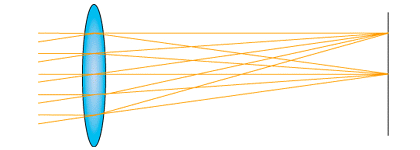 |
| Monochromatic aberration |
Spherical aberration |
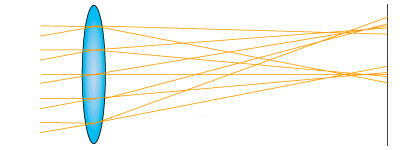 |
| Coma |
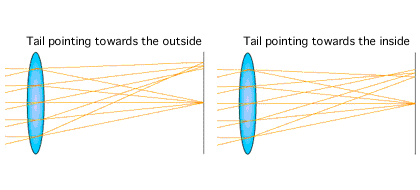 |
| Astigmatic difference |
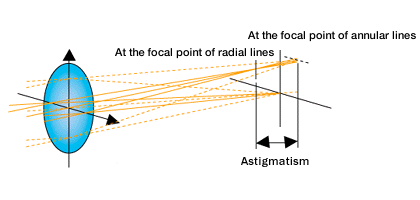 |
| Curvature of field |
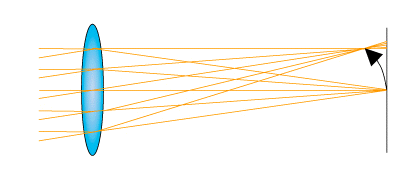 |
| Distortion |
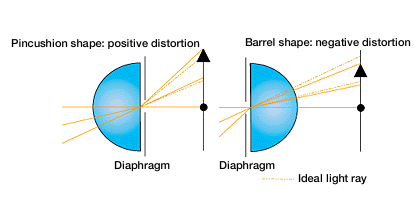 |
| Chromatic aberration |
Longitudinal chromatic aberration |
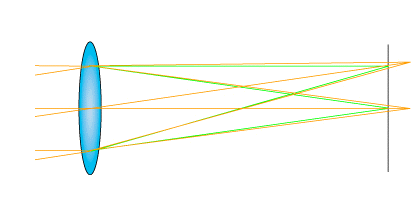 |
| Lateral chromatic aberration |
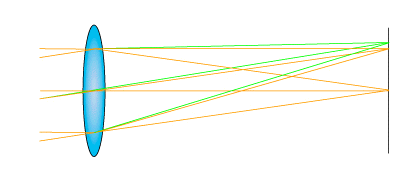 |
-
- In a real optical system, the above seven aberrations are mixed, so the image becomes complex.









